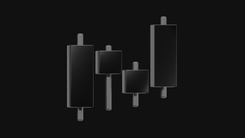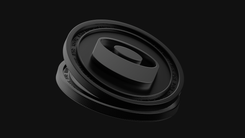- Wallet
- Coinhold 14% APY
- P2P No fee
- Mining
- Referrals
- About
- Help center
- Support
- FAQ
- Support
- For business
Custodial vs Non-Custodial Wallets: Which One Should You Choose?
Choosing a crypto wallet isn’t just about convenience — it’s about control. When you hold crypto, you’re not just managing money. You’re managing access. And that access depends entirely on one thing: who holds the keys. If it’s you, the coins are yours. If it’s someone else, you’re trusting them to do the right thing on your behalf.
What Is a Custodial Wallet?
A custodial wallet is one where a third party — usually an exchange or a crypto service — holds your private keys for you. This setup is common on platforms like Binance, Coinbase, and OKX. You still see your balance, and you can trade, send, and receive crypto, but you’re doing it through someone else’s infrastructure. On the surface, it works just like a traditional financial app. But behind the scenes, you're not in full control.
That can feel perfectly fine — until something goes wrong. If the platform goes offline, gets hacked, freezes your account, or complies with a government request, you could lose access to your funds. You haven’t lost the coins themselves — but you’ve lost the ability to move them. That’s a crucial distinction in crypto.
What Is a Non-Custodial Wallet?
A non-custodial wallet gives you full ownership from the start. You generate your own private keys, and no one else — not a company, not a government, not even the wallet developer — can access your funds. You’re in charge. Tools like MetaMask, Trust Wallet, and hardware wallets such as Ledger or Trezor fall into this category.
With that freedom comes responsibility. You’re expected to securely store your recovery phrase. If you lose it, there’s no password reset or tech support to help you out. Your crypto is tied directly to your keys — and if the keys are lost, so is everything attached to them.
Still, for many users, that’s a price worth paying. If you want to participate in decentralized finance, interact with dApps, or simply avoid depending on centralized platforms, a non-custodial wallet gives you the access and autonomy you need.
Why the Difference Matters
Many beginners enter crypto through custodial platforms and don’t realize that what they’re using is closer to a crypto bank account than a personal wallet. That’s fine for trading or learning the basics. But it doesn’t offer true ownership. If your goal is to actually hold and control your crypto — especially long-term — non-custodial wallets are the standard.
This difference becomes even more important during times of volatility, regulation, or platform outages. In those moments, having control over your private keys is what separates those who wait for support from those who stay in control.
What About the Middle Ground?
There are also hybrid options, like smart contract wallets and multisig wallets. These can offer more flexible setups — for example, allowing multiple people to approve transactions or providing recovery options without fully giving up control. They’re often used by teams or long-term holders managing large amounts, but the idea is the same: build more control into the system without returning to full centralization.
These tools are still evolving, but they hint at where crypto is headed — toward solutions that are both secure and user-friendly, without forcing a trade-off between safety and sovereignty.
Final Thought: Control Is the Point
Crypto was built on the idea of personal ownership. If you don’t control your keys, you don’t control your crypto. It’s that simple. You don’t need to become an expert overnight, but knowing whether your wallet is custodial or not is a fundamental step. Once you understand the difference, you’re better prepared to protect your assets, make informed choices, and use crypto the way it was designed — on your own terms.




